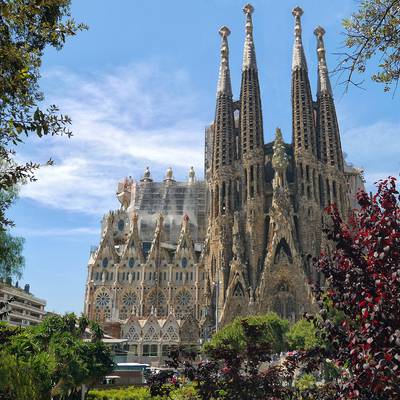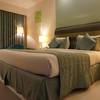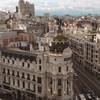
Where in Barcelona should I stay?
Barcelona – Spain’s second city – sets the template for urban style, hip design and sheer non-stop energy. Where others tinker at the edges, time and again Barcelona has reinvented itself. And as you'd expect for somewhere this vibrant, there's plenty of choice when deciding where to stay in Barcelona.
Ramblas. No day in the city seems complete without a stroll down the Ramblas. For Spanish poet Federico García Lorca, it was “the only street in the world which I wish would never end”. Lined with cafés, restaurants, souvenir shops and flower stalls, it is at the heart of Barcelona’s life and self-image.
If you hanker after a Ramblas view, you’ll pay for the privilege. Generally speaking, there are much better deals to be had. Try looking either side of the famous boulevard, often just a minute’s walk away. Spain’s most famous thoroughfare, however, has its attractions. It is sprinkled with cafés and restaurants, thronged by tourists and performance artists, and home to the acclaimed Boqueria food cafés.
The accommodations options in the area include: Hostal Benidorm, Hotel 1898.
The Barri Gòtic, or Gothic Quarter, which spreads east from the Ramblas, forms the very heart of the old town. You'll find some of the best places to stay in Barcelona here: with buildings from the 14th and 15th centuries, most of the district is picture-perfect. The area is full of shops, bars, restaurants, museums and galleries. Alongside some classy boutique choices, most of Barcelona’s cheap accommodation is found here.
Note that the south of the Barri Gòtic is rather less gentrified. Be careful (without being paranoid) when coming and going after dark and take care at night in poorly lit streets.
If you're staying in the Gothic Quarter, consider looking at the following accommodation: Hotel Do, Neri Hotel.
El Raval. The old-town area west of the Ramblas is known as El Raval (from the Arabic word for “suburb”). El Raval has always formed a world apart from nobler Barri Gòtic; in medieval times, it was the site of hospitals, churches and monasteries. By the 20th century it had acquired a reputation as the city’s main red-light district. Today it is known to all as the Barri Xinès – China Town.
Over the last two decades, however, the district has changed markedly. This is particularly the case in the “upper Raval” around Barcelona’s contemporary art museum, MACBA. Cutting-edge galleries, designer restaurants and fashionable bars are all part of the scene these days. You’d hesitate to call El Raval gentrified, as it clearly still has its rough edges. Don’t be unduly concerned during the day as you make your way around. It's best to keep your wits about you at night, though, particularly in the southernmost streets.
Some of the nice hotels to stay in the area include: Barceló Raval, Hotel España Ramblas.
The two easternmost old-town neighbourhoods of Sant Pere and La Ribera are both medieval in origin. They are often thought of as one district, but each has a distinct character. Sant Pere, perhaps the least visited part of the old town, has two remarkable buildings: the Palau de la Música Catalana and the Mercat Santa Caterina. By way of contrast, the old artisans’ quarter of La Ribera has always been a big draw. Here you can visit the graceful church of Santa María del Mar and the Museu Picasso. Both have a number of safely sited budget, mid-range and boutique accommodation options; all are well located and handy for the Born nightlife area.
For these two neighbourhoods, try Chic & Basic Born or Grand Hotel Central.
North of Plaça de Catalunya, The Eixample, a vast 19th-century street grid, is the city’s main shopping and business district. It was designed as part of a revolutionary urban plan and is split into Right (Dreta) and Left (Esquerra). The bulk of the city’s show-stopping modernista (Catalan Art Nouveau) buildings are also found here. There's also an array of galleries and some of the city’s most fashionable hotels, shops and boutiques.
The Dreta de l’Eixample acts as a sort of open-air museum, featuring extraordinary buildings. The most notable are the work of Antoni Gaudí i Cornet, Lluís Domènech i Montaner and Josep Puig i Cadafalch. The Esquerra de l’Eixample is one of Barcelona’s hottest night-out destinations. It hosts two Michelin-starred restaurants and some of the best bars and clubs.
For a night in The Eixample, consider BarcelonaBB or the5Rooms.

What can I bring home from Spain?

Do people in Spain speak English?

What should I know about surfing in Spain?

Can I drink tap water in Spain?

Where should I go in Spain for 2 weeks?

 What are the accommodation options in Spain?
What are the accommodation options in Spain?
 Where in Madrid should I stay?
Where in Madrid should I stay?